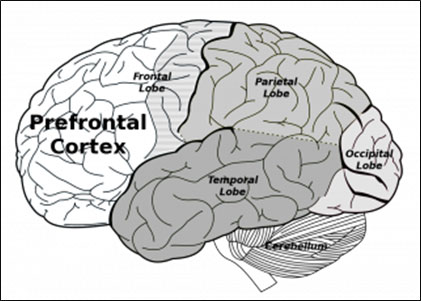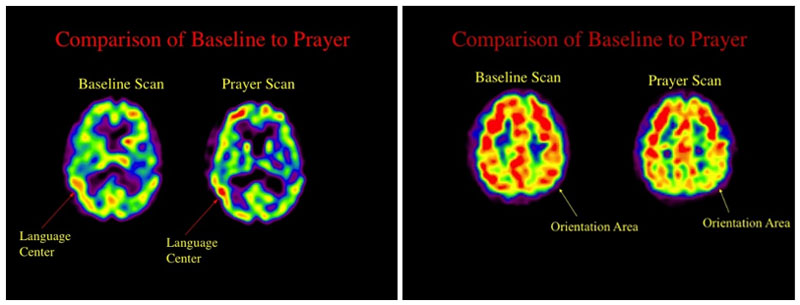Since the beginning of time, philosophers, psychologists, scientists, and many others have always questioned the presence of God.
According to research done since the past few years, belief in God isn’t merely a play of the mind or belief in the unseen, it is the reality.
Researchers have found a strong connection between brain activity and religious practice.
Dr. Andrew Newberg, MD, from Thomson Jefferson University Hospital and Medical College, found differences in brain activity of religiously devout individuals before praying, after praying and of atheist individuals before meditating and after meditating.
The differences were found in the most important part of the brain, the frontal lobe. He studied the effects of prayer on the human brain and what happens inside their heads while praying by injecting harmless radioactive dye into subjects and observing them through scanning machines. He observed brain scans of Muslim Imams, Tibetan monks, and meditating atheists.
Understanding Frontal Lobe
There are six components inside the brain; the frontal lobe, parietal lobe, occipital lobe, temporal lobe, cerebellum, and the brain stem.

This frontal lobe represents nearly a third of the entire brain. It is the last region of the brain to develop and the first to decrease in activity with growing age. It is the CEO of the brain, the boss of the brain, and is located right behind the forehead.
The frontal lobe is primarily involved in decision making, planning, organizing, working memory, self-management, and managing emotion.
The frontal lobe is what gives individuals their personality and is responsible for their cognitive skills. In addition, the frontal lobe is active during the conversation, and it allows speech and active listening.
The parietal lobe is located at the back of the brain and is divided into two hemispheres. The parietal lobe is also greatly impacted during prayer and meditation per research done by Dr. Newberg.
In general, its main function is to process sensory information about the processing location of parts of the body. It also interprets visual information and process language and mathematics.
Nonetheless, all components of the brain work cohesively for the proper functioning of the human body.
Brain Activity Scans

The images above show the brain activity of Franciscan Nurse, who has prayed to God daily for 34 years, before and after prayer.
They are derived from a SPECT scan, a nuclear imaging test, which uses radioactive substances and a special camera to observe how the organs work by creating 3D images.
SPECT, single-photon emission computed tomography (SPECT), allows the measurement of blood flow. The more blood flow a brain area has, the more active it is (red > yellow > green > blue > black).
After the prayer scan, the frontal lobe of the nurse, along with the language center, shows an elevated activity level. The increased activity of the frontal lobe, which is responsible for attention and conversation, indicates that when an individual prays, they are engaging in a conversation with God which resembles a physical conversation.



